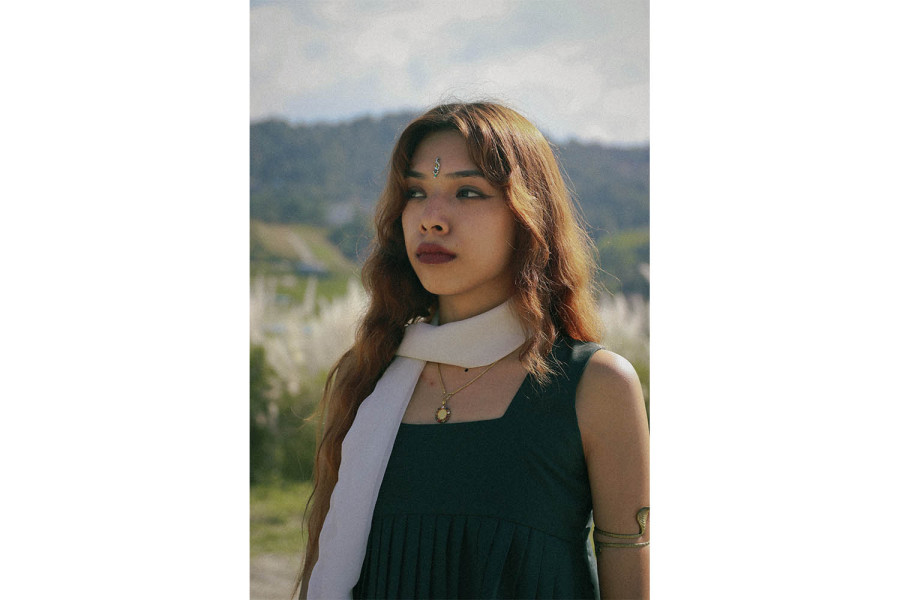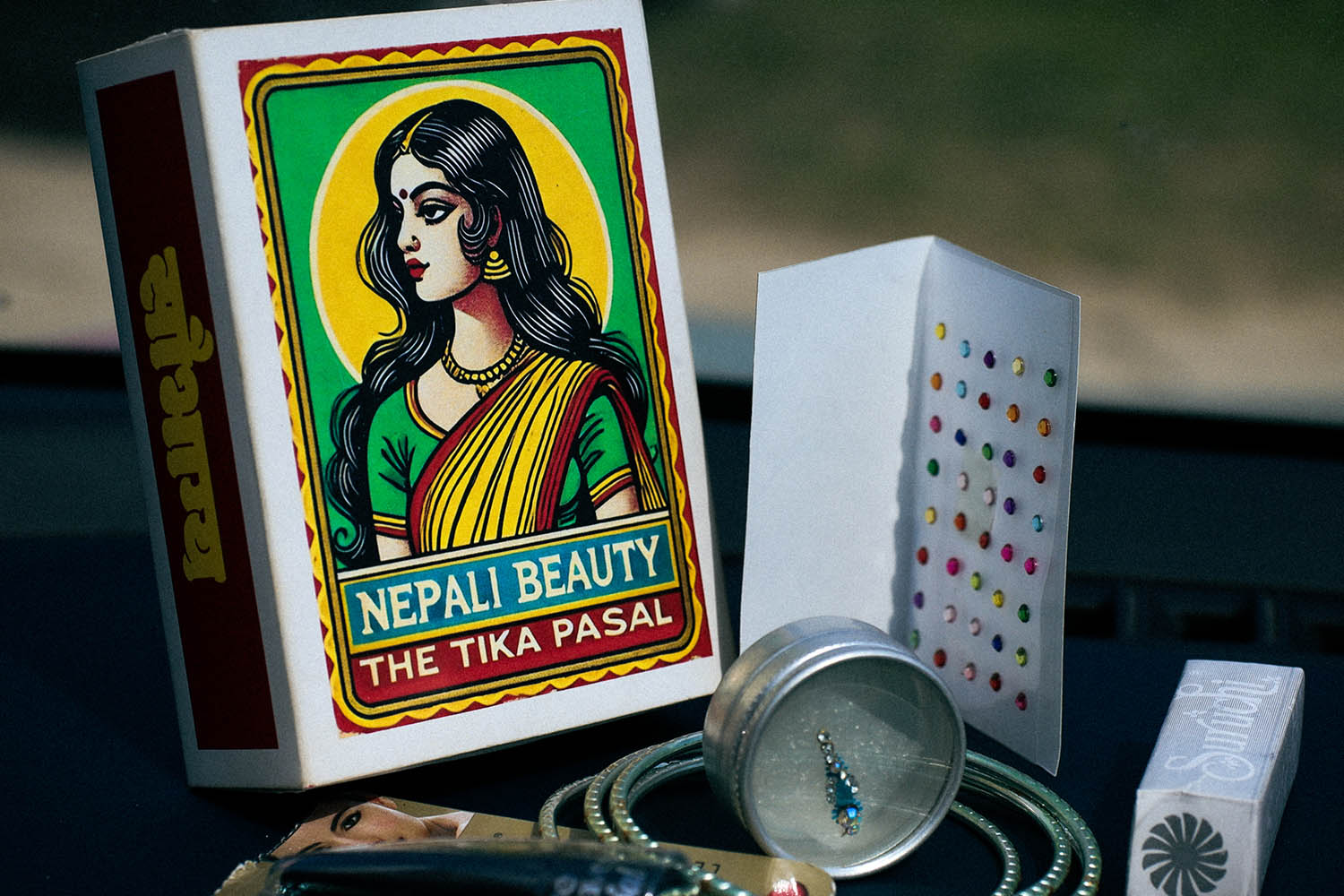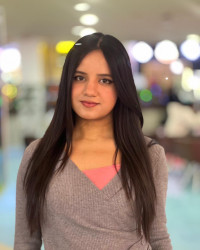Culture & Lifestyle
Blending cultures, redefining styles
Samridhi Karmacharya, founder of Saubbhagya, explores the evolving role of cultural symbols in modern fashion.
Sanskriti Pokharel
How often do you come across a woman in Western attire, accessorised with something distinctly Eastern like a Tika, Bindi, lacha, or chura? Not so often, right? But if you have, chances are it was Samridhi Karmacharya.
Karmacharya, founder of Saubbhagya, says, “True style, to me, is taking an overlooked material and turning it into something beautiful and fashionable.”
Karmacharya loves experimenting with new materials and techniques to create something unique and unexpected. She even provides workshops on designing tika/bindi.
In this conversation with the Post’s Sanskriti Pokharel, Karmacharya articulates how tika/bindi became her signature touch and her perspective on blending Eastern and Western fashion elements as a form of evolution rather than dilution.
What inspired you to wear tikas regularly, and how did that evolve into your brand, Saubbhagya?
I started wearing tikas regularly right after graduating from high school, mostly as an accessory to complement my outfits. I wore velvet tikas in various colours and sizes for about a year. During that time, aunties asked me a few times why I had married so young.
The turning point came when I tried a long ‘Kokila behen’ tika that had been sitting on my dresser for months. Wearing it gave me a surprising sense of confidence, even though I switched back to velvet tikas after feeling strange stares, or maybe I was just imagining them.
A few months later, I began experimenting with long tikas in different designs and even started pairing multiple tikas to create unique looks. People began complimenting me for my tikas, and I realised that something I saw as simple and routine—my tikas—caught a lot of attention. I’ve always been drawn to dichotomies and love mixing Eastern traditions with Western fashion. Tika became a fun way for me to express that blend of cultures.
This realisation led to the creation of my brand, Saubbhagya. I was inspired by the traditional ‘Saubbhagya’ sets, which include tika, bangles, pote, comb, mirror, and so on, as they embody what womanhood means to many Nepali women. I reimagined the ‘Saubbhagya’ set, keeping elements that resonate with me as an unmarried Nepali woman—such as tika, tika glue, bangles, kajal, and additional tikas. Although I wanted to create a full ‘Saubbhagya’ set, budget constraints prevented me from doing so at the time. The tika is one of the few cultural symbols explicitly reserved for women, and through Saubbhagya, I aim to honour a Nepali woman and womanhood as a whole.

Can you explain what your workshop ‘Naritywa’ is all about? What motivated you to start this initiative?
‘Naritywa’ is a workshop focused on exploring the concept of womanhood from an Eastern perspective. I was motivated because I realised that my understanding of the world, including my understanding of womanhood, is greatly influenced by what’s in the Western media. I felt the need to reclaim what it means to be a woman, one that’s rooted in our Nepali heritage.
In the workshop, we explored questions like: What defines us as women in Nepali culture? What practices do we hold onto, and what do we let go of as we navigate modernity? What rituals or practices made them feel feminine? I wanted to gather people from different generations to share their stories, particularly those from the pre-internet era.
Have men participated in the workshop? If so, what kind of responses have you received from them, and how do they view this exploration of womanhood?
Yes, to my surprise, men have joined the workshop, adding an enriching layer to the discussions. I sincerely appreciate their willingness to take part in a space that might traditionally be viewed as focused on women’s experiences alone.
Their feedback has been overwhelmingly positive and thoughtful. Many shared that the workshop offered them a nuanced understanding of womanhood, revealing perspectives they hadn’t previously considered and highlighting its depth and beauty. Hearing them describe how meaningful and eye-opening the experience was touched me. Their participation has enriched the conversation and brought new insights and understanding that have only deepened the exploration of what it means to embrace and celebrate womanhood.
How do you respond to critics who might say blending traditional Eastern elements with Western fashion dilutes the authenticity of both?
Blending Eastern and Western elements is a form of evolution rather than dilution. Culture is constantly evolving. My goal is not to dilute the essence of tika or traditional Eastern symbols but to create a middle ground between past and present. I think the path I am taking is very personal. I am trying to find a space between traditionalism and modernism to incorporate Nepali culture into my life while not alienating myself from modernity.
Also, my Maa, who is 90 and deeply connected to Nepali tradition, loves my style and calls me a true “Nepali Maicha”. If someone as traditional and sensitive to our culture as her can appreciate this fusion, I believe it speaks for itself.
What are your plans for both the workshop and your brand? How do you see these initiatives growing over time?
For ‘Saubbhagya’, I envision expanding the brand beyond tikas to include other cultural accessories. In the future, I aim to offer complete Saubbhagya sets that can be purchased for personal use or as gifts for the women in your life, with tika as just one element of the collection. I also hope to enter the wedding industry, as ‘Saubbhagya’ holds a special place in Nepali weddings and traditions.
As for the ‘Naritywa’ workshop, I hope to hold more sessions. I want to expand the discussion of womanhood and cultural identity to a broader audience, inviting more diverse perspectives and experiences.




 16.12°C Kathmandu
16.12°C Kathmandu













%20(1).jpg&w=300&height=200)

